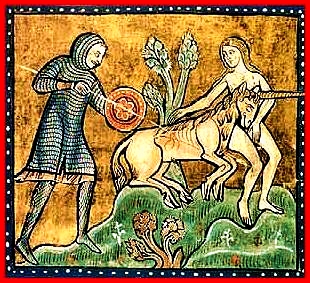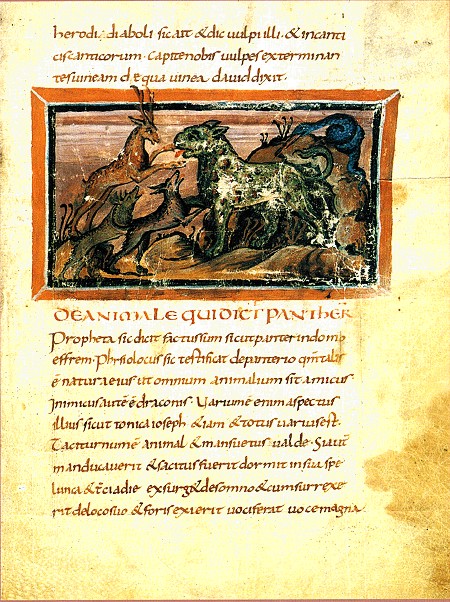For these last two weeks of Lent I have begun posting a Catholic Word of the Day. Would you like to continue?
Is there anyone who would be willing to take on posting that?
1 posted on
03/27/2009 6:00:39 PM PDT by
Salvation
To: nickcarraway; Lady In Blue; NYer; ELS; Pyro7480; livius; Catholicguy; RobbyS; markomalley; ...
I had never heard of this.
Do you want to continue with a Catholic Word of the Day after Lent?
2 posted on
03/27/2009 6:02:08 PM PDT by
Salvation
( †With God all things are possible.†)
To: Salvation
Actually, I knew about the pelican. There is a relief of one under the altar in the Blessed Sacrament Chapel at the Cathedral here. I happened to be there when a tour went through one time.
7 posted on
03/27/2009 9:49:18 PM PDT by
Desdemona
(Tolerance of grave evil is NOT a Christian virtue. http://www.thekingsmen.us/)
To: Salvation
A unicorn captured through the guiles of a virgin, whose power causes the animal to fall into a trance.

Or, perhaps, your Italian is better than mine. What does this say:
Nel Physiologus, opera alessandrina del II secolo a carattere zoologico-religioso, che tanta importanza ebbe per la catalogazione dei bestiari medievali, è scritto che l'unicorno poteva venire catturato solo per intercessione di una vergine. L'animale amava a tal punto la castità che alla vista di una fanciulla immacolata non poteva fare a meno di correre a lei per posarle la testa in seno e addormentarsi placidamente: in realtà questo sarebbe stato l'unico sistema per ammansire e addomesticare la bestia. Source
15 posted on
03/28/2009 11:29:08 PM PDT by
annalex
(http://www.catecheticsonline.com/CatenaAurea.php)
To: Salvation
More.

The Bern Physiologus (Bern, Burgerbibliothek, Codex Bongarsianus 318) is a 9th century illuminated copy of the Latin translation of the Physiologus. It was probably produced at Reims about 825-850. It is believed to be a copy of a 5th century manuscript. Many of its miniatures are set, unframed, into the text block, which was a characteristic of late-antique manuscripts. It is one of the oldest extant illustrated copies of the Physiologus.
Source (also see rather mysterious tables filled with statistics at source)
16 posted on
03/28/2009 11:36:24 PM PDT by
annalex
(http://www.catecheticsonline.com/CatenaAurea.php)
FreeRepublic.com is powered by software copyright 2000-2008 John Robinson

